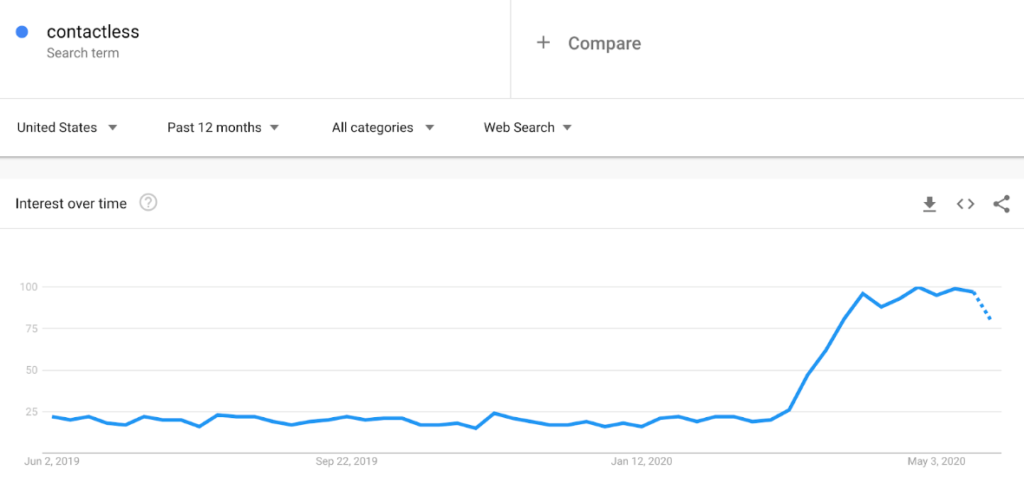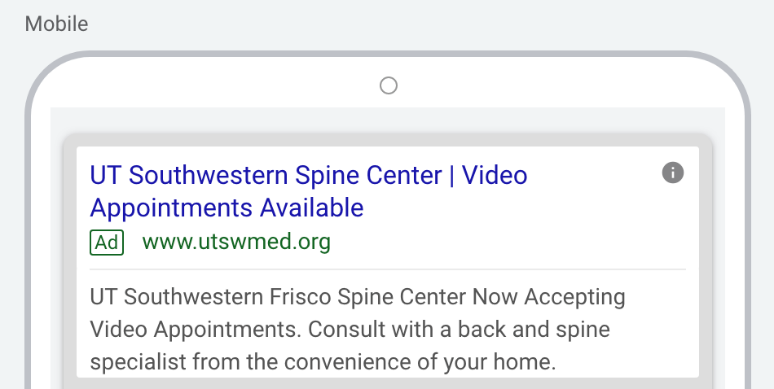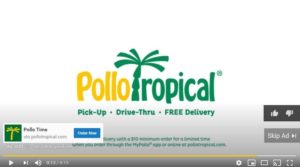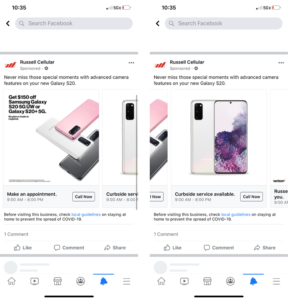
If you told me three months ago that the term “contactless” was going to be a trending term, I would have thought it was a new way of saying “wearing glasses” or maybe a new Lasik surgery procedure. I used to have to pour my margarita in my child’s sippy cup when a meltdown forced us to leave the restaurant early. (We’ve all been there.) Now, they have margaritas to go or they just might even deliver the margarita to your house.
Messaging and Terms have changed:
Delivery > Contactless Delivery
Dine In > Curbside Pickup
Birthdays > Birthday Parades and yard signs, OMG the yard signs
Graduation > Graduation Parades
Employees Must Wash Hands > Everyone Must Wash Hands
Why are they wearing a mask > Don’t forget your mask
Not only have our conversations and the way we search for information online due to COVID-19 changed, but there have also been fundamental changes in our daily lives and behaviors. No routine is the same. No behavior is the same. And for advertisers, this requires a change in tactics to communicate more effectively with consumers.
Finding the Right Messages and Content to Resonate with Potential Customers
Conditions will vary depending on which state you’re in, but with states taking a phased approach to re-opening, campaigns should be rolled out in a way that is aligned with the targeted state’s status; however, to be effective, audiences must be segmented in many more nuanced ways than just who is in a lockdown state, a partially open or fully open state. We look at segments such as past converters and examine unique messages that re-engage these customers and entice them to come back. We also take a look at a brand’s products and services and evaluate new messages that might be able to reach all prospects who may be willing to consider a new brand or business now that certain conditions have changed in their life. COVID-19 has created new audiences and new opportunities, and we’re working with many of our clients to aggressively explore new ways to capture a new set of future customers.

Strategy can be visualized in phases. The first phase is focused on a heavy, multi-message approach to help determine what resonates. Next, the best performing messages are aligned with the current customer base to re-engage them and capture their attention again. And finally, the right message for a new, growing audience segment is dialed in. We use data to validate the strategy while continuing to optimize and energize our clients’ businesses back to pre-COVID levels.
Relevant Messaging is a Moving Target
When the virus first started to change our world, many advertisers began pulling campaigns that would not resonate in that climate. Some advertisers quickly pivoted to more sensitive, timely ad copy while others struggled to figure out their messaging.
When the quarantines began, it was important to be mindful of these changes and make necessary adjustments. We recommended being more sensitive to those adjusting to life at home. There was worry about others and the uncertain future ahead. Clients’ messaging changed in order to show they were still there for customers and their needs. During high-stress times, brands benefit by staying true and authentic to their values and reassuring to customers. A financial client, Ameriprise, used this time to change their display messaging to assure prospective clients that they will help them navigate through market volatility challenges.

To help consumers get through this, focus shifted to what specific products or services made the most sense for each client’s target audience. For example, for our restaurant or QSR clients, messaging was adjusted to let their customers know they were still open for business, even if in a different capacity through curbside pickup, drive-thru, or delivery.

We wanted to avoid being salesy and keep the focus of our messaging on the value our clients provide. It was also important that CTAs made sense as to not imply a sense of urgency during a pandemic.

With many states being in the process of re-opening, finding what messaging best resonates with customers now is a goal everyone should be working towards.
Test, Test and Test Some More!
Being open to experiment and continually monitor targeting performance is important, as we adjust and evolve to the very sensitive nature of our marketing climate.
We believe that most brands and businesses are in a clear shift away from the crisis and “here for you” ads. Instead, they are moving into communications that are meant to engage and remind consumers that their favorite stores and restaurants are still here and that they’re excited and prepared to welcome them back. “Open for business” is the rallying cry.
With our clients here at Mindstream Media Group, we have been reevaluating and testing the messages placed in front of prospective customers to determine if they are well aligned with this new normal due to COVID-19. The usual “come see us” type of advertising to encourage customers to visit our clients’ stores and purchase their products, for instance, may not be the best while certain businesses remain closed or partially closed to foot traffic and states are maintaining different “open” standards. “Come see us” means many things now.
For two of our clients providing “need-based” services, we adjusted search ad copy to let their customers know they are still open for business, but also to make customers aware of the extra precautions they are taking to ensure their safety.

We are working with our clients to explore shifts in messaging and continuously adjust as state and city guidelines, as well as human behavior, evolve. Being successful in unprecedented times requires evaluating many new types of messages and targeted audience segments.
What’s Next?
As states gradually reopen and remove restrictions, audiences are beginning to change and have differing attitudes toward the current state of the country. Be mindful that life isn’t going to bounce back to normal for everybody. Everyone is adjusting and ad messaging will need to continually evolve. We understand our clients’ businesses and are working with them to advise their customers on their safety measures. As stay-at-home orders are being eased, we’re staying on top of the guidelines to properly promote our clients’ products and services to help them rebound successfully.


